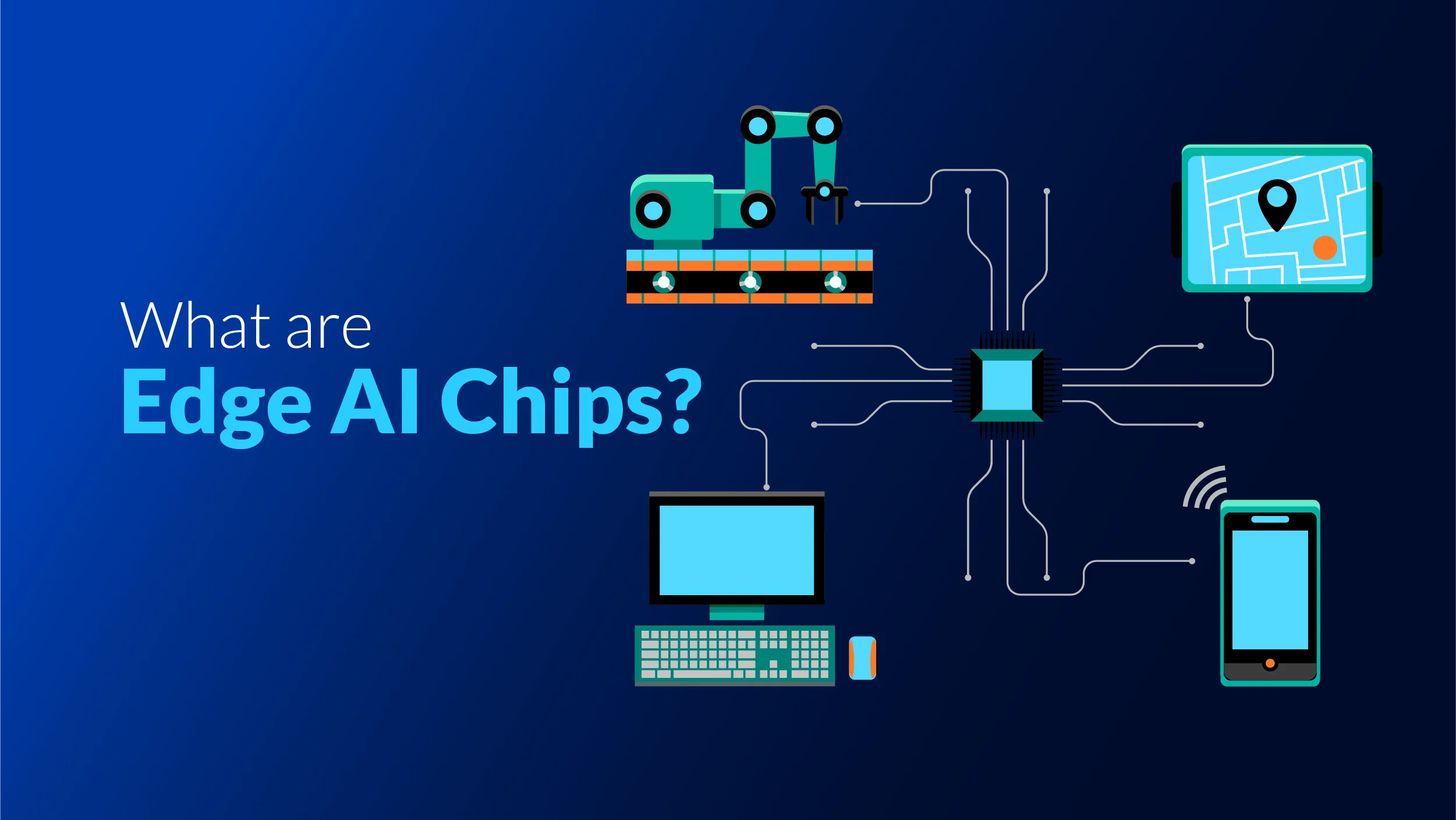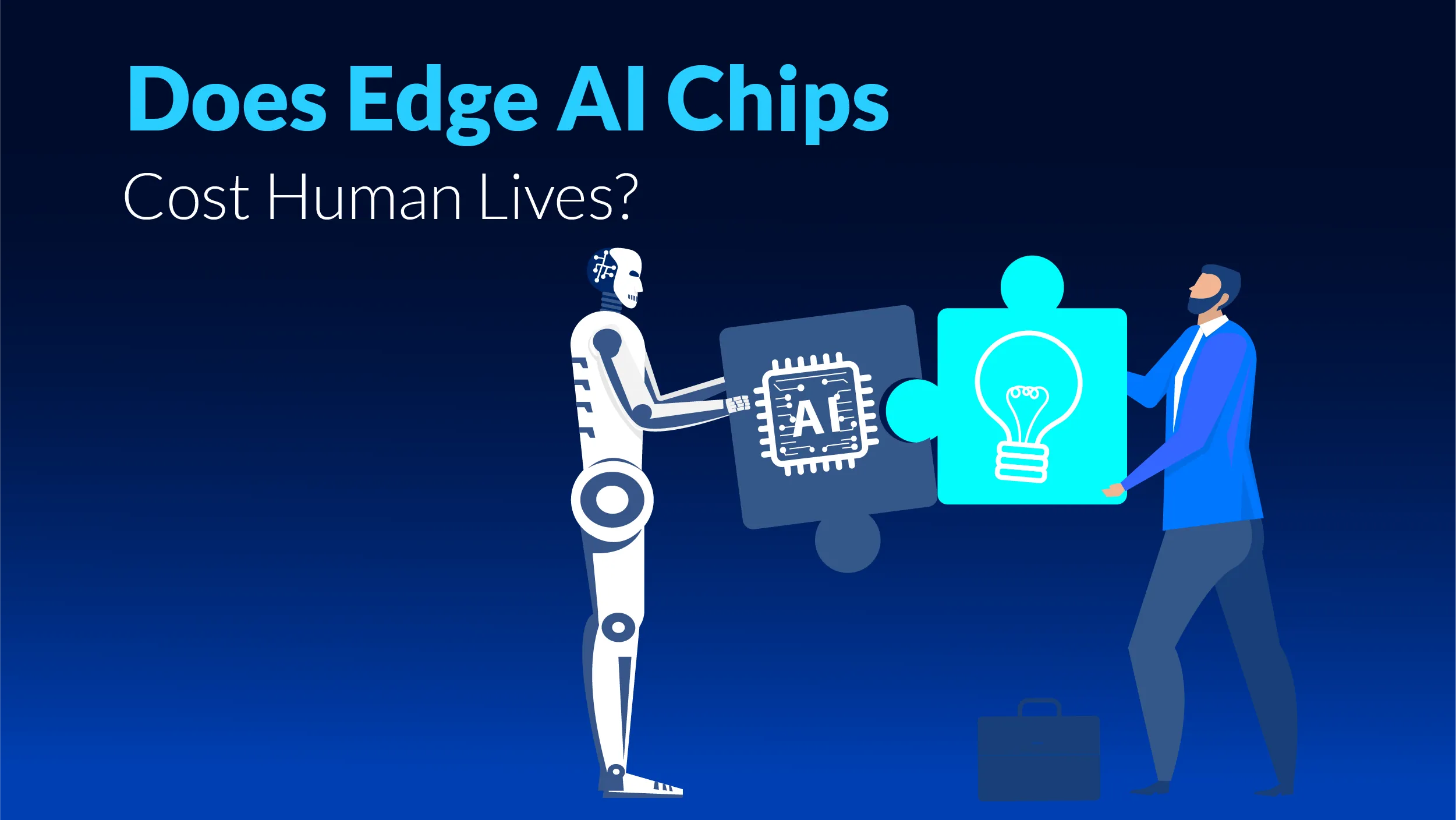Edge AI chips are highly developed processors that power technologies like ChatGPT, humanoid robots, etc, enabling them to function efficiently and intelligently. The global edge AI (artificial intelligence) chip market is estimated to accrue a valuation of $60 billion by 2028. This is a quarter of Elon Musk’s total net worth.
This blog post discusses the use cases and sustainable angle of edge chips. So, read on!
What are AI chips?
AI chips are hardware designed to improve AI tasks better than traditional processors like GPUs and CPUs. Different types of AI chips are in the market, namely Application-Specific Integrated Circuits (ASICs), Field-Programmable Gate Arrays (FPGAs), etc.
AI chips are specifically created to power complex AI applications. The global AI chips market for edge devices is forecasted to churn a revenue of $22 billion by 2034. Industries such as automotive, industrial, and consumer electronics drive this transformative growth.
What are Edge AI Chips?

Edge AI chips are specialized processors designed to perform artificial intelligence computations directly on devices at the “edge” of the network, rather than relying on centralized cloud servers. This includes AI accelerators which enable real-time data processing and decision-making, crucial for applications that require immediate responses, such as autonomous vehicles, smart cameras, and IoT devices.
Edge AI chips are characterized by their low power consumption, affordability, and ability to operate efficiently in various environments, making them ideal for integration into handheld devices and robotics.
Booming Growth of Edge AI Chips
Numerous generative AI tools, humanoid robots, and warehouse robots are currently under development. All these complex technologies need equally advanced processors.
As AI models become smaller and more efficient, there is a growing demand for chips that can process these models locally on devices, minimizing reliance on cloud computing. This shift towards edge computing enhances data processing speed and reduces latency, crucial for real-time applications.
Additionally, the surge in Internet of Things (IoT) devices requires localized AI processing to manage and analyze data efficiently at the edge, further boosting the demand for these specialized chips.
Omdia, a research company states that the increased revenue is mainly due to the growing demand for hardware in numerous industries as AI adoption skyrockets.
Also Read: Robotics in Electronics: Benefits, Types, Applications
5 uses of Edge AI chips
Listed below are the top 5 best applications of edge AI chips.
Smartphones
Edge AI chips in smartphones enhance the user experience by enabling real-time computer vision applications, such as facial recognition and augmented reality, allowing for advanced features like voice assistants and image analysis directly on the device.
By processing data locally, these chips allow for faster response times and improved privacy, as sensitive data does not need to be sent to the cloud for analysis.
For instance, when a user unlocks their phone using facial recognition, the Edge AI chip quickly analyzes the facial features in real time, ensuring a seamless and secure experience.
Smart Cameras
In smart cameras, Edge AI chips facilitate real-time image and video analysis, which is crucial for applications like security surveillance and traffic monitoring.
These chips can detect and recognize objects, track movements, and even analyze behaviors without the need for constant internet connectivity.
This capability allows for immediate alerts and actions, such as notifying security personnel of suspicious activity, thereby enhancing safety and operational efficiency.
IoT Devices
Edge AI chips are integral to Internet of Things (IoT) devices, enabling them to process data locally rather than relying on cloud servers. This local processing reduces latency, allowing devices to respond quickly to changes in their environment.
For example, smart thermostats can learn user preferences and adjust temperatures in real-time, optimizing energy usage without needing to communicate with a central server. This not only improves performance but also enhances user privacy by minimizing data transmission.
Autonomous Vehicles
In autonomous vehicles, Edge AI chips play a critical role in processing data from various sensors, such as cameras, LIDAR, and radar, in real-time.
This capability is essential for making split-second decisions, such as navigating obstacles or adjusting speed based on traffic conditions.
By analyzing data on the edge, these vehicles can operate safely and efficiently, ensuring a smoother driving experience while reducing the risk of accidents.
Industrial Automation & Finance
Edge AI chips are increasingly used in industrial automation to monitor and optimize manufacturing processes.
These chips can analyze data from machinery and sensors on the factory floor, enabling predictive maintenance and real-time adjustments to production lines.
For instance, if a machine shows signs of wear, the Edge AI chip can trigger maintenance alerts before a breakdown occurs, minimizing downtime and improving overall productivity. This proactive approach helps manufacturers maintain efficiency and reduce operational costs.
By 2024, the financial services firm expects sales to surpass 1.5 billion units, with a CAGR of 20 percent, more than double the semiconductor industry’s 9 percent long-term forecast.
Does Edge AI Chips Cost Human Lives?

Like any other thing, using edge AI chip technology does take a major chunk of energy. Artificial intelligence systems consume enormous quantities of electricity, which worries the microelectronics sector, which is keen to create new chip architectures with lower energy consumption.
Thomas Kämpfe, a group manager for neuromorphic systems and departmental manager at the Fraunhofer IPMS Center for Nanoelectronic Technologies, has risen to the challenge.
“Today, there is a huge demand for Nvidia chips to train and run language models like GPT and diffusion models that generate images and video. And while GPU software architecture has many advantages, companies sometimes need to invest millions of dollars in energy costs to train and run these AIs.” Kampfe stated.
This means people have to manufacture an AI chip that consumes less energy but works faster.
In 2023, Kämpfe showcased an innovative chip design that uses ferroelectric field effect transistors (FeFET). These could store data and information even without a power supply. The new chip can store and process data simultaneously in transistors, reducing the bottleneck between processing and memory.
Spotlight on Edge AI chips
The burgeoning growth of edge AI chips is revolutionizing numerous industries by enabling advanced, real-time processing capabilities directly on devices. As technology continues to evolve, the development of more efficient and powerful edge AI chips will play a crucial role in shaping the future of AI and edge computing.




